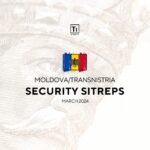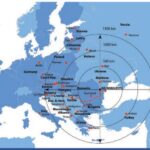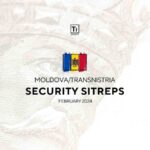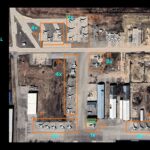The American air strikes against Kata’ib Hezbollah (KH), one of the strongest Iraqi Shiite militias, on 29 December are a “game-changer.” The strikes prove that the United States is finally willing to retaliate militarily against Iran’s covert aggression. While the kinetic retribution will instate some degree of deterrence, Washington will likely remain passive towards Iranian activities in Iraq. In response to the air strikes, Iran could provide its Iraqi partners, such as KH, with air defense assets.
FAILURE TO RETALIATE ENCOURAGED IRANIAN ATTACKS
Ever since he took office, U.S. President Donald Trump refrained from using force to retaliate against Iranian attacks. The President long believed that crippling economic sanctions are enough to bring the Mullahs to the negotiating table, while military options will only pull the U.S. further into the Middle Eastern quagmire/spiral of unwinnable and open-ended conflicts. Absent red lines and a credible deterrence, Iran was free to attack U.S. interests or allies – as long as Tehran could cover its tracks. The September air raid on the Saudi Aramco petrochemical facilities, for example, proved how much damage Tehran can cause, while remaining unpunished.
THE PMUs, AN ARMY OF “SPECIAL GROUPS”
After the Aramco attack, Iran moved to the next and most important point on its target list: Coalition facilities in Iraq. Through its ideological vanguard, the Iranian Revolutionary Guards Corps (IRGC), and its coalition of Shiite militias, the Islamic Republic in Tehran sought to render Iraq an inhospitable location for the Coalition. Those militias – referred to by the CIA as “Special Groups” (SGs) – provide the bulk force and command structure of the 100,000-men strong Popular Mobilization Units (PMUs) in Iraq. The PMUs are a coalition of militias established or reactivated by a 2014 fatwa of Grand Ayatollah Ali Sistani that calls on Shiites to fight ISIS.

COMPILATION of Iraqi Tier One SGs and their leaders. ANNEX shows groups of interest that patrol the Syrian-Iraqi border on behalf of the IRGC.
The strongest and largest SGs are KH, Asaib Ahl al-Haq (AAH), the Badr Organization (BO), Harakat Hezbollah al-Nujaba (HHN) and Kata’ib Imam Ali (KIA). Their leaders are open about their close relationship with Iran and many have even served under IRGC-Quds Force commander Qasim Soleimani in the Iran-Iraq War. These groups and their predecessors are responsible for thousands of American casualties during the Iraqi war and are the culprit behind the hundreds of rocket attacks on Coalition bases in the past year.
The SGs share ideological and strategic objectives with their Iranian allies:
(1) to evict Coalition forces from Iraq (if necessary by force);
(2) to establish a Komeinist regime in Baghdad;
(3) to export the Islamic revolution throughout the Middle East;
(4) to destroy Israel.
STEP ONE: EJECT THE COALITION FROM IRAQ
The Coalition (“Operation Inherent Resolve”; OIR), was formed by the U.S. to combat ISIS at the invitation of the Iraqi government in 2014. The Coalition gathered more than 40 international members to conduct airstrikes against ISIS and provide training and advice to the Iraqi Security Force (ISF). The Coalition and the IRGC-backed SGs both fought against ISIS and, despite their differences, even coordinated at times. However, with the threat of ISIS physical caliphate removed, Iraqi SGs resumed their campaign to force U.S. and Coalition forces out of Iraq.
🇮🇶 Iraqi Hezbollah Brigades attacks against the US bases in Iraq since the beginning of 2019 pic.twitter.com/JdYd7yaDJA
— INTELSky (@Intel_Sky) December 30, 2019
In 2019, the SGs began targeting Coalition installations in Iraq with rocket salvos. While the fire was mostly indirect and ineffective, it occasionally injured Coalition forces and killed Iraqis serving in the ISF. The rocket attacks targeted everything from airfields, government facilities, civilian sites to training camps. Left unpunished, the attacks escalated and multiplied in the second half of the year. Only when a 30+ rocket salvo fell on the K-1 air base near Kirkuk on 27 December 2019, leaving one American dead and others severely wounded, the IRGC and its partner forces crossed a “red-line.”
K-1 ATTACKS PROMPTS COALITION TO RETALIATE
The attack on K-1 air base prompted the United States to seek retribution, which came in the form of a F-15E “strike package” from Jordan. The American jets prosecuted five sites used by Kata’ib Hezbollah (KH), two in Syria and three in Iraq. The target list was carefully picked to strike the IRGC where it hurts the most, namely the land line-of-communication (LOC) linking Iran with its allies in Syria and Lebanon.
U.S. DECLASSIFIED footage showing one of the yesterday’s air strikes on Kata’ib Hezbollah (KH) positions in E #Syria & W #Iraq. This video, shot through an F-15E FLIR pod, shows the air strike on KH compound near al-Qa’im. pic.twitter.com/PLJgLFTpLi
— T-Intelligence (@T_intell) December 30, 2019
All KH targets that were prosecuted by the F-15s are located in the immediate vicinity of the Al Abukamal and al-Qa’im crossings on the Syrian-Iraqi border. Control over these locations is vital for the IRGC to maintain its LOC open. Iran’s expansive transnational logistical operation requires regional warehouses and assets in place to facilitate the free flow of cargo. With the destruction of KH’s headquarters (HQ) and ammunition caches, Iran’s LOC took tactical – albeit only temporary – damage.
South of Al Abukamal, the IRGC, KH and other groups jointly operate one of the largest Iranian-financed military installations abroad. The compound is known as “Imam Ali” and serves as a major logistics node for the military capabilities flowing on the land-bridge. The compound hosts several ammunition depots, barracks and – according to ImageSatIntel – is undergoing construction to shelter an underground tunnel network. Despite multiple Israeli Air Force covert raids, Imam Ali garrison continues to expand and distribute military capabilities to Iraqi SGs operating in Syria and Hezbollah in Lebanon.
1/6 – #ISI assessment: completing the construction of the #Iranian border crossing and the #military base may allow #Iran to transfer equipment, #weapon, and personnel from #Iraq through its new controlled border crossing and to fortified storehouses in the new base in #Syria. pic.twitter.com/DEr9QNKzcW
— ImageSat Intl. (@ImageSatIntl) November 18, 2019
Sunday’s air strikes demonstrate that the US is willing to prosecute Iraqi SGs if they kill U.S. personnel in Iraq. However, this experience will likely prompt the SGs to expedite their effort to establish an air wing under Iranian supervision.
AIR FORCE FOR THE PMUs
Abu Mahdi al-Muhandis, the KH leader and PMU deputy commander, issued an order to establish an air force for the PMU on 4 September 4 2019. The air wing will be headed by Salah Mahdi Hantoush. Iraqi Prime-Minister Abel Abdul Mahdi rejected the idea, fearing that the PMU will further develop as a parallel armed force, similar to the duality of IRGC and regular Iranian Armed Forces. Muhandis nevertheless defended his proposal, pointing to Israeli Air Force (IAF) attacks against several KH camps on Iraqi territory. Pressured by the PMUs, the Iraqi government imposed stricter airspace regulations that require “all Iraqi and non-Iraqi partners” (including the OIR-Coalition) to seek approval from the Iraqi command before flying in Iraqi airspace.
Despite the strong rhetoric from Baghdad, the PMUs perceive the Iraqi government as unable or unwilling to protect them from external attacks. The core SGs in the PMU also see the Iraqi government as an existential threat, as Baghdad seeks to integrate them into the Armed Forces. This would mean that SGs such as KH, BO and other groups need to disband their political wings and assimilate into the ISF. Despite paying lip service to the process, the big SGs are unlikely to give up their political power or their military autonomy.
The IRGC is expected to meet al-Muhandis’ wish and aid the PMUs in forming an air force. First, the IRGC will likely supply them with surface-to-air missiles (SAMs) that will provide a degree of defense against air attacks. The IRGC-Aerospace Forces (IRGC-AF) are likely to provide the PMUs with the “Khordad the 3rd” (Buk M-2 rip-off), “Mersad” (MIM-23 Hawk copy) and “Sayyad-2” SAM systems. The IRGC-AF could also arm their Iraqi counterparts with expandable unmanned aerial vehicles (X-UAVs) and cruise missiles, similar to those used in the Aramco attacks. [MORE ABOUT IRANIAN-PRODUCED SAM SYSTEMS]
The deployment of such systems in Iraq would significantly interfere with Coalition air operations in Iraq. Coalition aircraft would be subjected to a SAM threat, especially in the border areas, making even the most routine operations such as ISR more difficult. Attacks against Iraqi SGs will be rendered more complicated, as the Coalition will need to use more sophisticated weaponry and assets and always be ready to shift from ground attack to Suppression of Enemy Air Defenses (SEAD).
Restricting the airspace is another step in making Iraq an increasingly inhospitable place for the Coalition, which could eventually led to a withdrawal of forces from the country.
TARGET: US EMBASSY BAGHDAD
Thousands of Hizbollah supporters have breached the GREEN ZONE and are trying to storm the U.S. Embassy in Baghdad. BO leader, Hadi al-Amiri and AAH leader, Qais al-Khazali are present in the crowd. The situation is ONGOING.
Video of the current scene at the #US Embassy in #Baghdad, #Iraq supporting Kata’ib #Hezbollah. #Iran pic.twitter.com/jZAU8SrZjr
— Aurora Intel (@AuroraIntel) December 31, 2019
By HARM
Founder of T-Intelligence. OSINT analyst & instructor, with experience in defense intelligence (private sector), armed conflicts, and geopolitical flashpoints.






